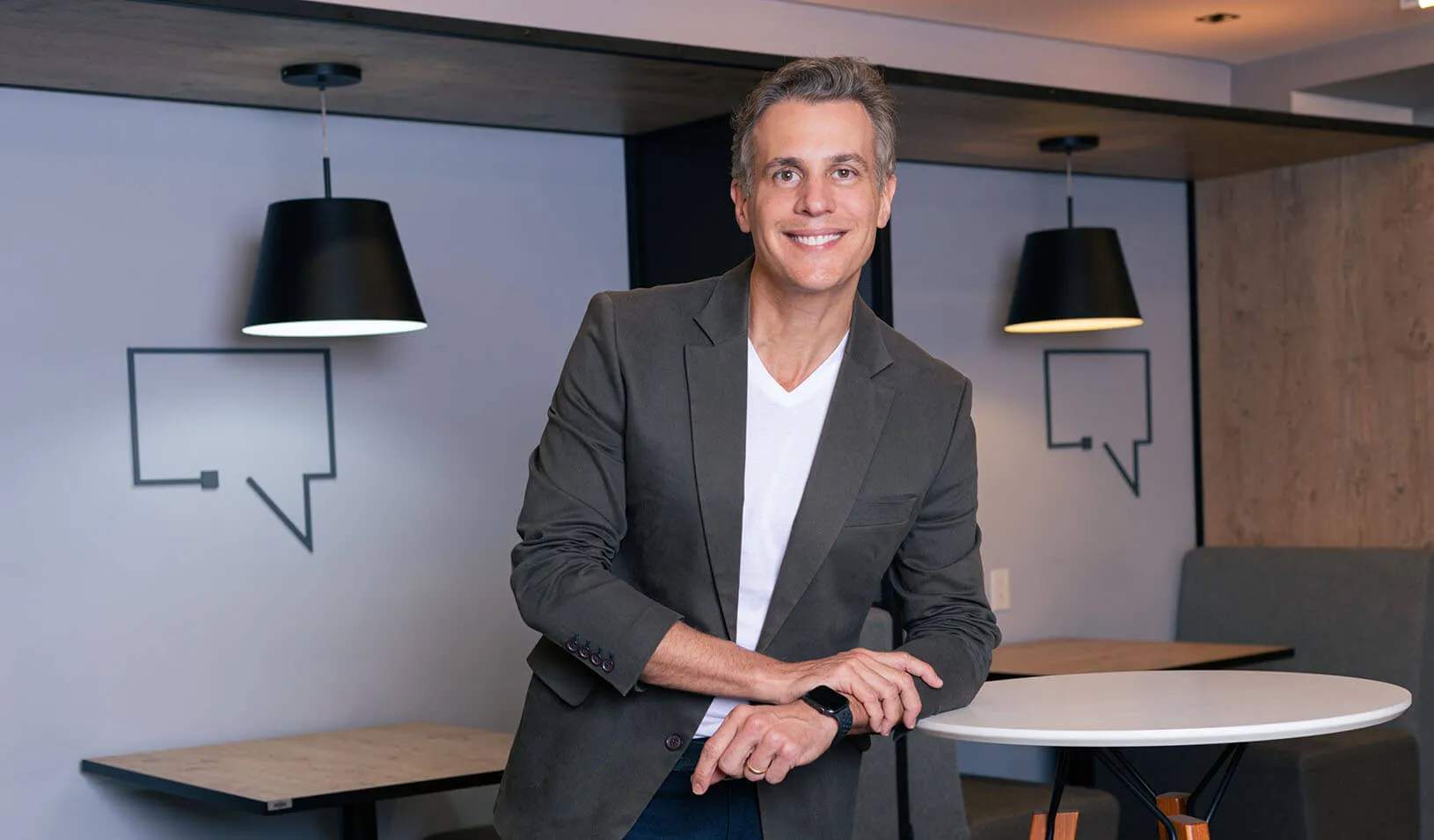An Innovator Embraces the Need to Think Bigger
A conversation with Tiago Aguiar about his career and experience in the Driving Innovation and New Ventures in Established Organizations program
June 13, 2023

Tiago Aguiar heads innovation at TecBan, a Brazilian company that manages the country’s automatic teller machines and is also the biggest ATM provider in the world in terms of transactions and volumes of money dispersed. Aguiar attended the Driving Innovation and New Ventures in Established Organizations program where he realized the importance of coming up with big solutions for big companies.
You have worked as a lawyer, an entrepreneur, and innovator and have started several businesses. What brought you back to the classroom for this program?
I was hired to explore new ventures for TecBan and to come up with new products – basically to be an entrepreneur inside the company. I’ve embraced innovation frameworks and different types of innovation, both inside the company and externally, but I reached a point where I said, “Maybe now is a good time to go to school to study this subject.” I wanted to get information from the classroom and professors.
What was your overall experience in the program?
I went to learn best practices and I found that in my organization we weren’t far off. We were actually doing things that the program’s professors said that we should be doing. There weren’t huge surprises but it was still amazing. In each class I learned things that complement what I’m already doing, which was really good. I didn’t want the classes to end. Two hours would go by suddenly, and I’m thinking, no, please keep teaching!
How did this program reframe your thinking about innovation?
I learned that to really get the attention of the board, you have to do something that really scales. One of our professors said, “Billion dollar solutions come from billion dollar problems,” … I can’t go to the board and present something that affects only 1% of our income now.
So I came back and told everyone, “Let’s focus our efforts and resources on things that will scale. Let’s build something for the next 40 years.” I adopted this mindset of thinking big.
One person alone can’t change a company. Did the program address how to promote change and acceptance of new ideas within?
One of the case studies we talked about involved Kodak. At the time, upper managers at Kodak realized that digital competition was coming. So did employees at the bottom level of the company. But in the middle, they weren’t willing to fix it or make changes. Changing the culture of the company is the hardest part. I can come up with ideas and technology but if we don’t work on people’s mindsets to ultimately change behavior, we won’t be able to do anything.
Have you had the opportunity to begin to do that?
I’m still trying to. At the end of the program, we were asked to make some kind of a commitment toward change. My commitment was to summarize the program and make a lecture to present to my CEO and to my company. I gave a presentation with 50 different slides. I told people they were getting 40 hours in one hour! We had 200 people in the meeting, and people liked it a lot. That was really good. So I’m putting light on the issues we have.
What advice would you give to others who might take this program?
Be prepared. It made all the difference. I read the materials and I took notes. Not everyone does that. But to make it more worth the money that you’re investing, this is something you have to do. There’s nothing like class experience. Nothing supersedes being present.
Explore More Participant Spotlights
Breaking New Ground for the Future of Farming

Executive Lays the Groundwork to Becoming a Chief Operating Officer

Critical Care Specialist Reimagines Health Care in a Post-Pandemic Era
